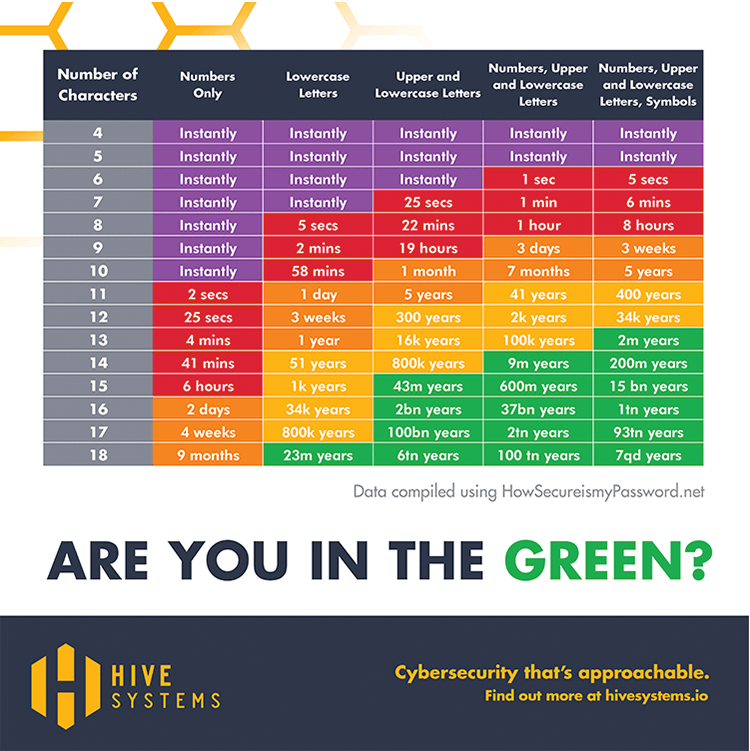Usernames and passwords are the keys used to access your home or business system. Creating strong usernames and passwords will help keep unwanted users outside! This guide provides recommendations for best practices that can help you create a secure and unique account.

Create a Strong Username
Logging into an account requires both a username and password. If the username is weak, such as your name or email, it is easier for hackers to gain access. Additionally, if your username is used on another website, and one account is compromised, a hacker already has one of the keys necessary to log into your other accounts. The below Do’s and Don’ts guide for passwords also offers tips you can use to create a secure username.

Create a Strong Password
The last key you’ll need to access your account is a password. Strong passwords are difficult to create and even harder to remember. The below Do’s and Don’ts provide tips for creating and remembering your secure password.
CHART SOURCE: HIVE SYSTEMS
Do
Create passwords with at least 12 characters.
The longer the password, the more difficult to guess.
Use complex passwords.
Adding lower and upper-case letters, symbols, and numbers into a password makes it more difficult to guess. Consider replacing letters in a password with similar symbols or letters.
For example: E, 3, or $.
Regularly change your password.
Updating your password on a periodic basis reduces the likelihood of it being hacked.
TRY THESE METHODS FOR CREATING A MORE COMPLEX BUT MEMORABLE PASSWORD:
- Use a phrase known only to you.
For example: B1llyM33tsS@vann@H. - Take the first/last letter of a word from a sentence you create.
For example: The Quick Brown Fox Jumped over the Lazy Dog five times! – TqBFj0tLD5x! - Combine random words. Use a random word generator to find 3 words to create a password.
For example: CuttingDomin@ntMak3.
Don't
Use public information in your password.
Most common information can be easily found by hackers.
For example: Your service provider’s name, Alarm.com, your name, street address, email, phone, pet’s name, or Social Security Number.
Use similar or the same passwords on other websites.
If one password is compromised, assume any similar passwords would be as well.
Use your username in your password.
Making small adjustments to and using your username in passwords is common and easy for hackers to guess.
Use dictionary words or well-known passwords.
This reduces the difficulty of guessing the password.
For example: password123 or I’maPassword, aardvark, alphabet, etc.
Use repeated letters or numbers to increase the length.
This doesn’t increase the difficulty of guessing a password.
For example: 1111, dddd, or 1234.
Write down your password or have a web browser auto-save it.
If you write it down or save it, someone may easily find it.